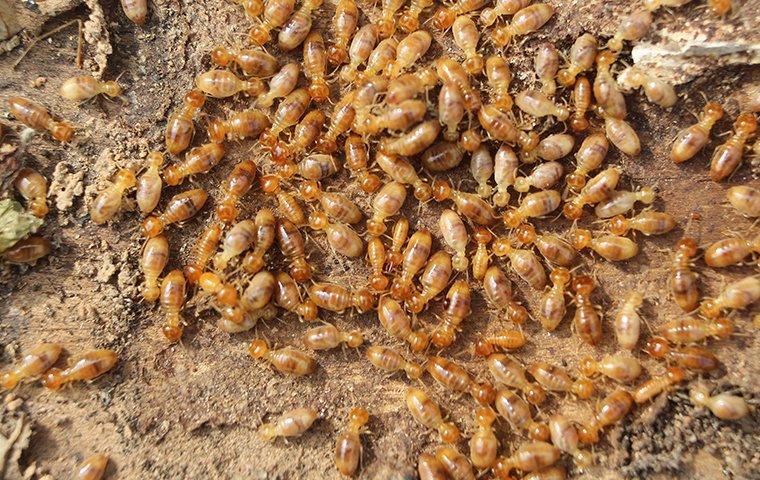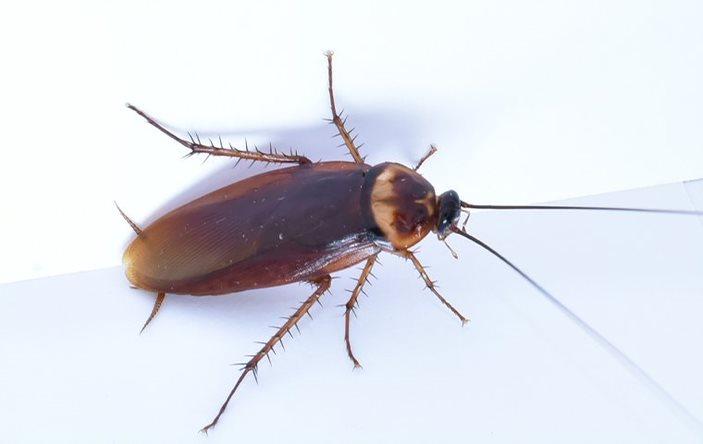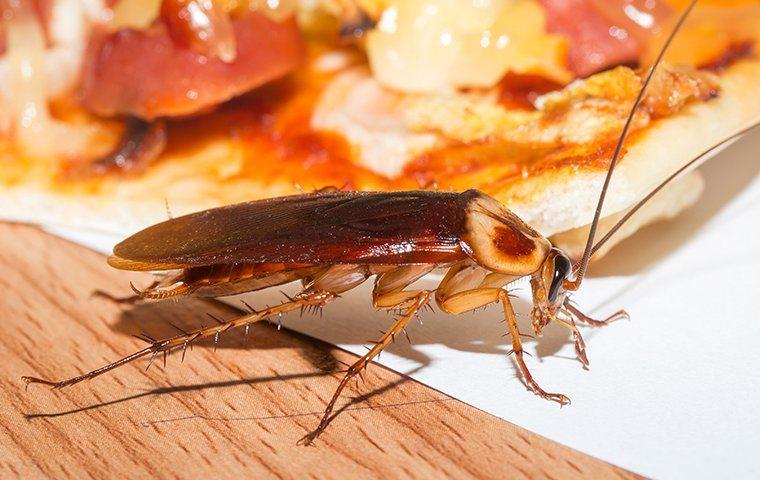How To Identify And Get Rid Of A Termite Infestation On Your Jacksonville Property
Termites don't damage a home in weeks or months; it takes years. The reason they can damage a home over the course of several years is that they are incredibly sneaky. The first step in preventing termite damage is learning to detect the signs of termite damage and active termites on your property. But, even when you know how to find signs of termites in your yard, they may still elude detection. You can add another layer of protection by learning what attracts termites to your property and taking steps to remove those attractants. Of course, termite detection and prevention take energy, focus, and time. If you'd rather put termite damage prevention out of your mind, you can jump to our contact page for termite pest control in Jacksonville. We offer annual inspections, proactive termite control, and termite treatments. If you're here to learn valuable tips and tricks to help you avoid termite damage, read on.

How To Spot Signs Of Termite Damage
There are basically three types of termites in Jacksonville. They are subterranean, drywood, and dampwood termites. Subterranean termites prefer to live in the ground and attack homes by coming up from the soil. Drywood termites live in hardwood and attack homes from the air. Dampwood termites are sort of a mix of both. What you need to know most about these termites is how they attack your home so you can look in these places and detect activity.
Look In Dark Places: All worker termites live in utter darkness. Their aversion to light is so great, they don't even like to expose themselves to moonlight. If you hope to find evidence of termite damage or active termites, you must inspect dark voids. Here are some examples:
-
Underneath your deck, particularly if there are objects stored under the deck.
-
Underneath your porch. Porches with wood skirts are perfect for termites.
-
Underneath your exterior stairs.
-
In the crawlspace under your home if you have one.
-
Inside concrete piers in your crawlspace. You may need a flashlight and a mirror to get this job done.
The termites you'll likely detect in these areas are subterranean or dampwood termites. Subterranean termites need contact with the soil and will create mud structures. Dampwood termites can live entirely inside the wood they're feeding on and do not create mud structures.
Inspect Moist Wood: Subterranean and dampwood termites are attracted to softwood and prefer wood that is water damaged. Check wood like this first. If subterranean termites are in the wood, you may see mud patches on the exterior of the wood. If you have dampwood termites, you may see the damage they're doing. In both cases, tap on solid wood members and listen to see if they sound hollow.
Check Wood-To-Soil Contract: When subterranean termite workers enter your yard, you may detect them in spots where wood touches the soil. You may need to move objects made of wood or excavate dirt around wood structures to find them. Here are some examples of wood-to-soil contact.
-
Wooden fence posts
-
Wooden deck posts
-
Dead branches
-
Wood borders around landscaping
-
Scrap wood from a construction project
-
Stumps and logs
You may also find termites under other materials they feed on, such as cardboard, paper, and clothing.
Inspect Gaps In Hardwood: Drywood termites get into the cracks of your home and feed on hardwood. As they feed, they'll produce kickout holes and frass. A kickout hole is a tiny hole the size of a pencil tip. Frass is the droppings of termites. These droppings look like hardwood pellets about the size of pepper grains. Check these locations first:
-
Window frames
-
Door frames
-
Baseboards
-
Crown molding
-
Banisters
-
Skirting
-
Cabinets
Any time you see changes to the wood of your home, you should have a professional take a look. Several pests damage wood and pest professionals know how to tell what is attacking the wood of your home.
Why Termites Infest And Destroy Wooden Structures
Termites in the Jacksonville area are ever encroaching. They don't just pass through yards. When you see evidence of activity, you can know for sure that there is a nest nearby. You should also know that they won't stay isolated to a termite-infested tree, stump, or log. It is critical to take steps to make your property less interesting, so termites aren't attracted. Here are a few factors that attract termites.
Lights: It may seem strange to say that light attracts termites, since we just talked about how termites hate light, but it does. While worker termites live in utter darkness and avoid the light, swarmers do not. Swarmers are drawn to light sources, and exterior lights can bring them into your yard to establish a colony. If you're not aware, swarmers are winged termites. These winged termites are reproductives. They only have one purpose when they enter your yard. They're looking to start a family.
Entry Points: Termites can chew tunnels in wood to enter your home, but swarmers don't do this. Swarmers don't eat wood. The workers are the only termites in a colony that eat. All other termites get their sustenance from the workers through a process called trophallaxis. The reason swarmers get into homes and present a threat to wooden structures is that they find tiny gaps, cracks, and holes, then they enter and create a nest. When workers hatch, the damage begins.
Moisture: Damp conditions attract termite workers because workers require moisture to stay hydrated. Without moisture, the workers of a subterranean or dampwood termite colony will die off. Dampness is also a catalyst for wood rot, which is attractive to termites.
Food: Termites are drawn to food sources and the availability of food sources inspires colony growth. It is never good to have a termite food source in your yard, even if you intend to collect termite workers and throw the food source in a fire. Doing this will not address the queen. It will only work to make her create more offspring.
Termites encroach. While they won't pass through your property, they may go around if there is no reason to make a colony in your yard. The secret is to address these attractants.
How To Remove Factors That Attract Termites To Your Property
Now that you know what attracts termites to your property, let's turn our attention to termite prevention. These tips are linked to the attractions listed above.
-
Keep lights off at night if possible and draw curtains and shades at night.
-
Replace white lights with yellow lights. Insects can't detect yellow light.
-
Consider getting bulbs or fixtures that detect motion. When anyone approaches your home, the lights will come on. They stay on for the short time you need them and then turn off.
-
Use a caulking gun to seal gaps or fill in holes.
-
Use expanding foam to fill exterior wall voids.
-
Replace damaged or rotting wood.
-
Maintain clear gutters. You want your gutters to capture rainwater and channel the water away from your exterior walls and perimeter.
-
Maintain dry landscaping. Your plants need water from the soil. They don't need to remain wet. Water them in the morning so the moisture can evaporate off your vegetation and trim your plants to allow for good airflow.
-
Avoid overwatering. Your lawn and landscaping may need some extra love, but too much water is bad. Replace regular sprinklers with sprinklers that have a timer.
-
Repair plumbing issues. Leaking hoses, spigots, and pipes will make your water bill go up. They'll also dampen your exterior and attract termites.
-
Put wood deck posts on concrete supports.
-
Replace wooden fencing with vinyl fencing.
-
Stay on top of collecting dead branches in your yard.
-
Store dead branches in a container.
-
Store scrap wood on a rubber mat or elevated platform.
-
Put cardboard and paper scraps in a bin.
-
Dig soil away from wooden skirting or replace the wood skirting.
It is hard work to remove termite attractants, but that hard work can prevent a termite problem. If you already have termites on your property, or you want the best possible termite protection, here is the best solution.
The Best Way To Get Rid Of Termites On Your Property
Get a professional termite inspection and treatment. Don't take any chances with your Florida property. Professionals use professional-grade products that have a track record of success.
If you're in Jacksonville, reach out to Lindsey Pest Services. Our certified professionals use specialized equipment to detect termite activity directly and passively. We directly detect termites with moisture meters and TermaTrack T3i, which detects termites by tracking heat. For ongoing termite tracking, we install a termite bait solution. When termites take the bait, your technician will know it. There is no way to put a price on this kind of detection. Where there is no effective detection, some property owners give up on paying for termite protection, and termites are allowed to move in and damage their properties. Connect with us today to get the best possible termite control and protection for your Jacksonville property. We have the solution you're looking for.












